On this page you will find information on the:
Deer Pea Green Brier Morning Glory Pepper Vine
Dear Pea
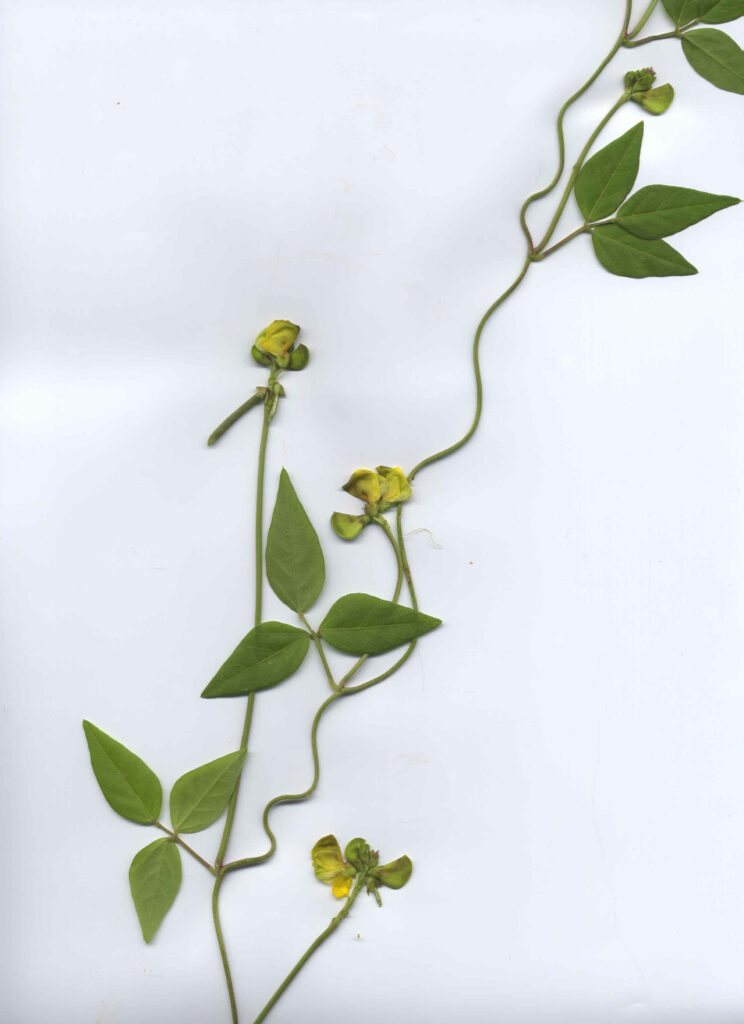
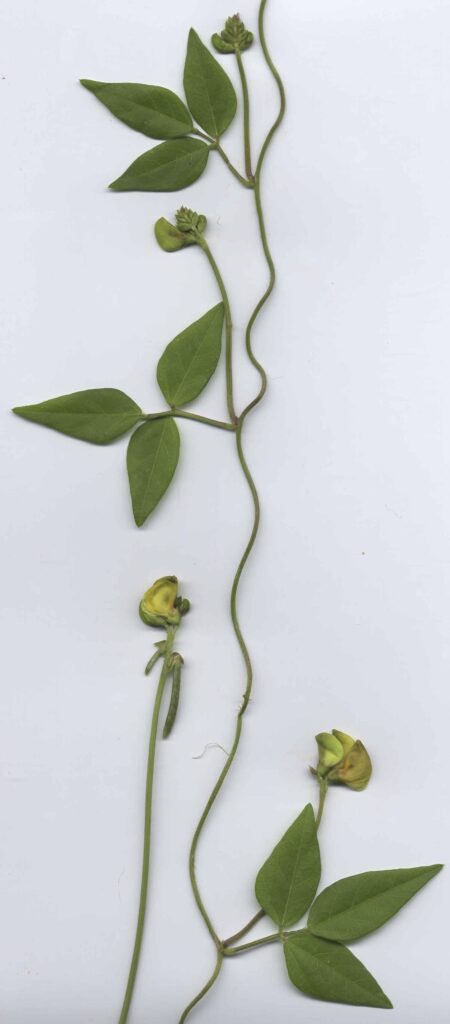
Common Name: Deer Pea
Scientific name: Vigna luteola
Type: Herb/vine
Habitat: swamp/ditch/drained area/
Predominantly found on the East side of the Greenway
Native/Non-native
Annual
Deer Pea is a creeping vine and a legume that beneficially “fixes” nitrogen to the soil and, like any good legume, also provides peas that are a tasty treat for deer and birds.
Late in the summer Deer Pea and its partner in crime, the Morning Glory try to destroy all the surrounding plant life by reaching out to them, climbing on top and relentlessly layering their runners one on top of the other until they block all the sunlight. It’s only the cold hand of death from winter’s freezes that take these cold blooded killers, and all the other annual plants, down to the swamp’s mud-line until the process starts all over again the next spring.
Greenbrier
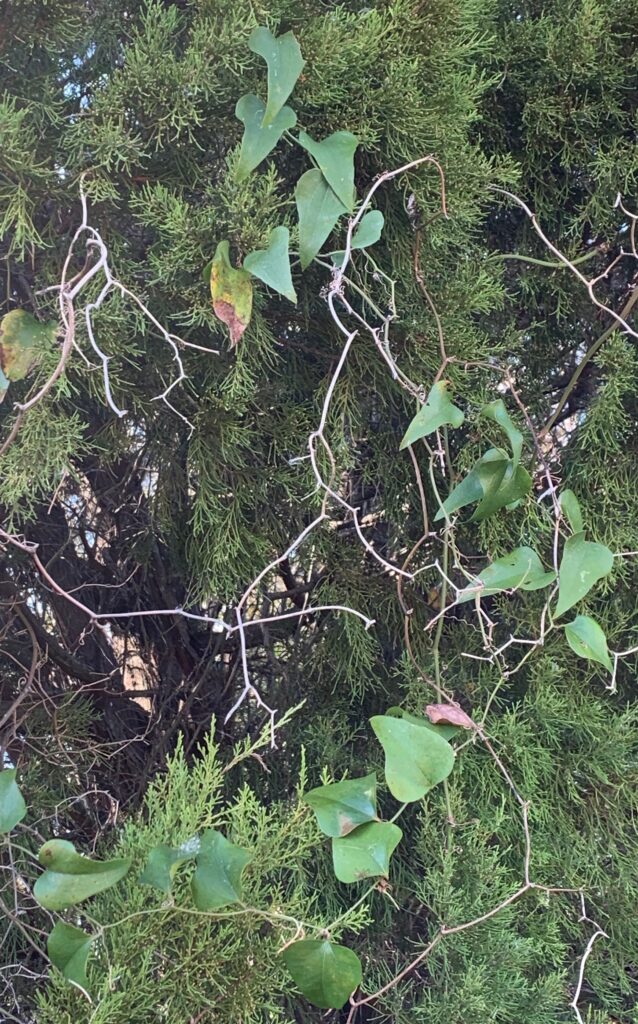
Common Name: Common Greenbrier
Scientific name: Smilax rotundifolia
Type: Vine
Habitat: drained area
Found on both sides of the Greenway
Native
Perennial
Greenbriers come in several varieties in the family Smilax. They are climbing vines that start with just a handful of bright, glossy green leaves and can take advantage of a tree by climbing high up in it, sprout a bunch more leaves and take over a considerable chunk of the tree’s exposure to the sun. Some of these vines will eventually develop long, stiff, rangy trunks covered with evil, flesh-tearing thorns. These can be the bane of the woods traveller because they grow away from the host tree, are a trip hazard and are tough enough to be used as aircraft-carrier arresting cables.
Each variety has something like a hidden potato growing in the ground below. The Choctaw considered the flour made from these a favorite food. In the spring the vines also grow a new, soft tip said to taste a lot like an asparagus but looks quite alien and malevolent.
Morning Glory
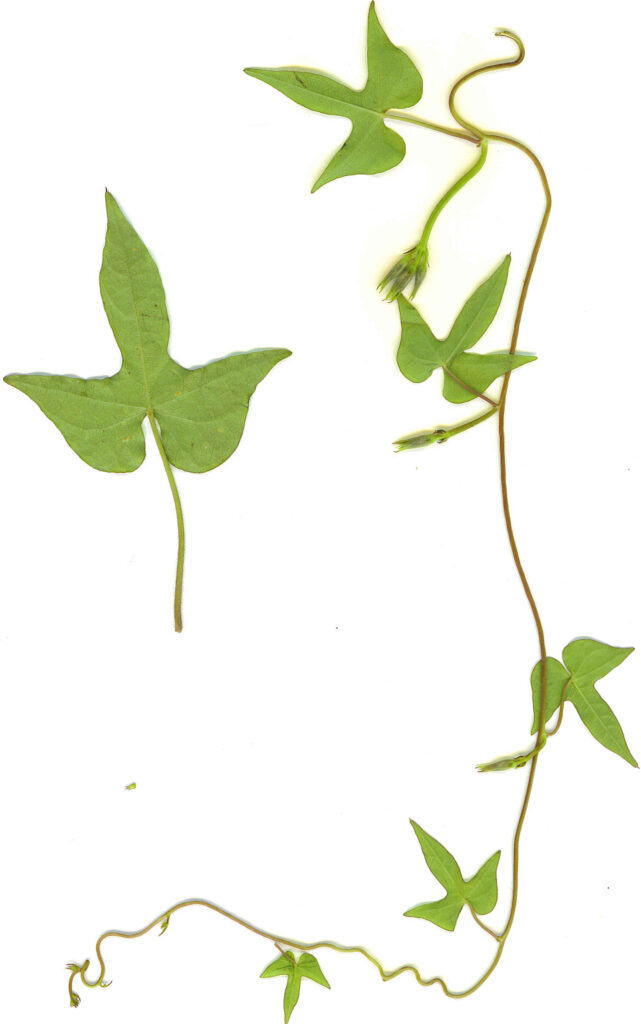
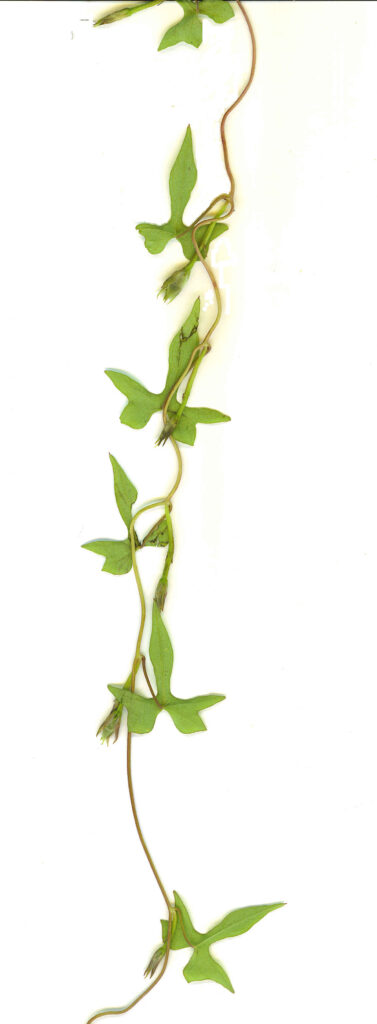
Common Name(s): Morning Glory, Bindweed
Scientific name: family – Convolvulaceae, genus – Convolvulus
Type: Vine
Habitat: swamp/ditch/drained area
Predominantly on the East side of Greenway
Native and Non-native
Annual
There are 200-250 species of the genus Convolvulus, each with pretty, little trumpet-shaped flowers that come in many different colors and each branching from long, delicate, twining vines. That’s where their niceness ends. By the end of the summer they have tried to smother all the other plants in their surroundings that their long runners can reach and climb on to. Only their death by freezing puts and end to this maniacal attempt to take over the world. Unfortunately, everything else that is an annual plant also has to die.
Peppervine
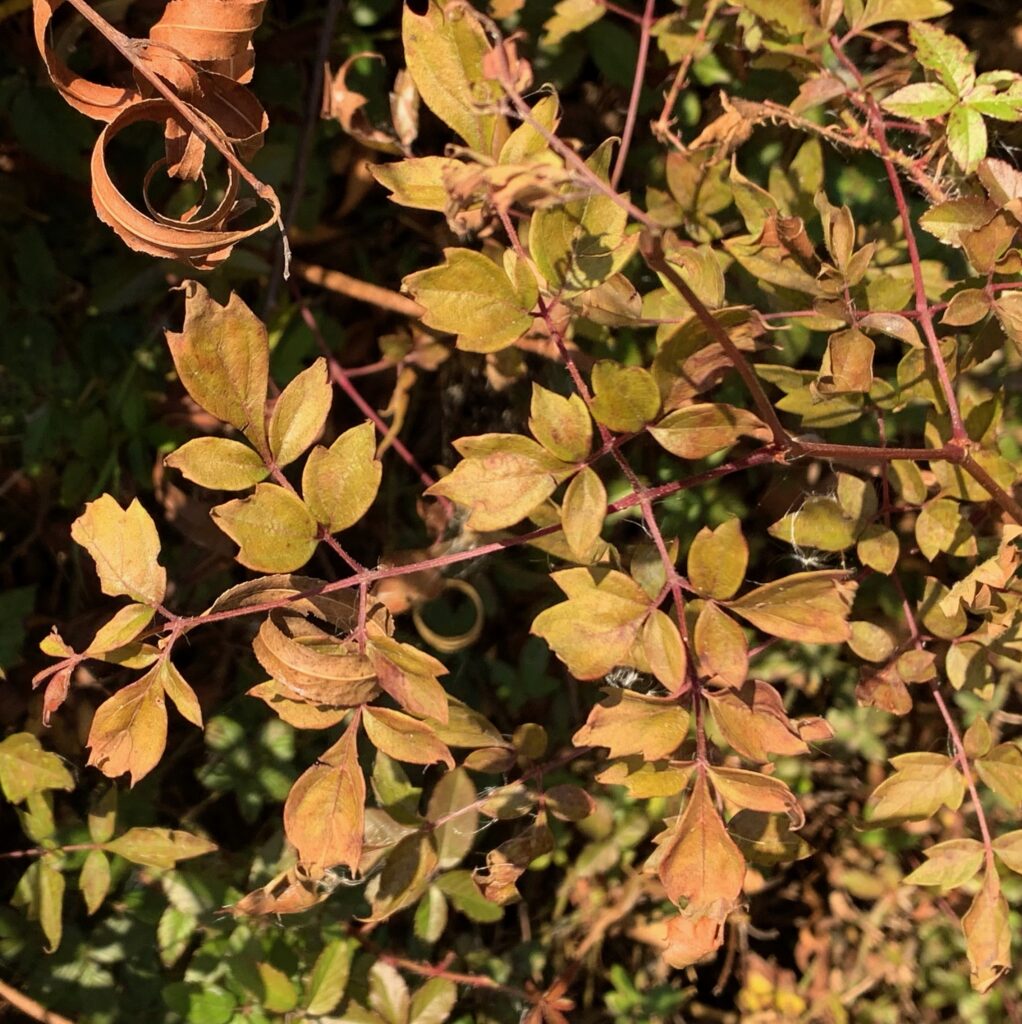
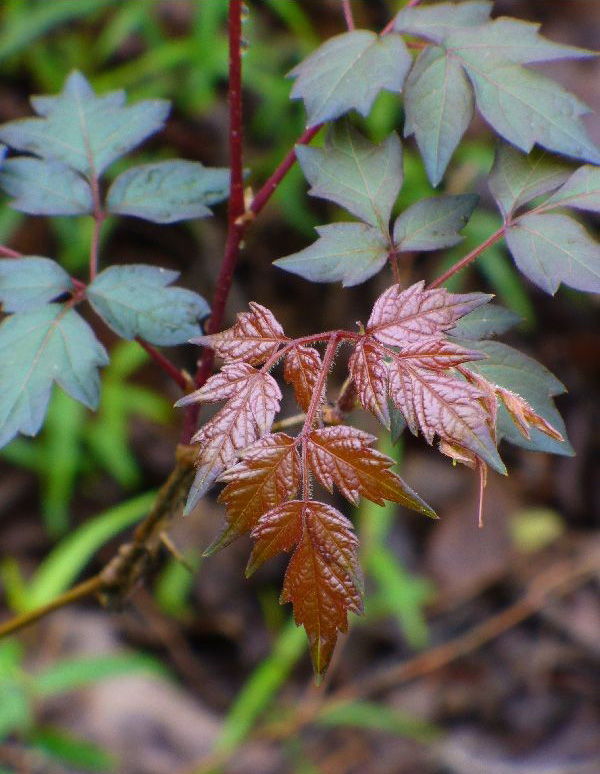
Common Name: Peppervine
Scientific name: Ampelopsis arborea
Type: Vine
Habitat: drained area
Found on both sides of the Greenway
Native
Perennial
Peppervine is valued by gardeners for its ability to populate a trellis quickly with lush, colorful growth. Out in the wild this same trait can severely impede fellow plants. If given enough time, it, its offspring and partners will entangle a whole hedgerow or even a fair-sized tree in a tangled mess of entwined, sun-hogging vines.
At some time during the year the vine’s small, pointy, exotic-looking leaves take on a reddish tinge and to the uninitiated, look suspiciously like they might be poison ivy or something bad. They’re actually safe and don’t need to cause alarm.
